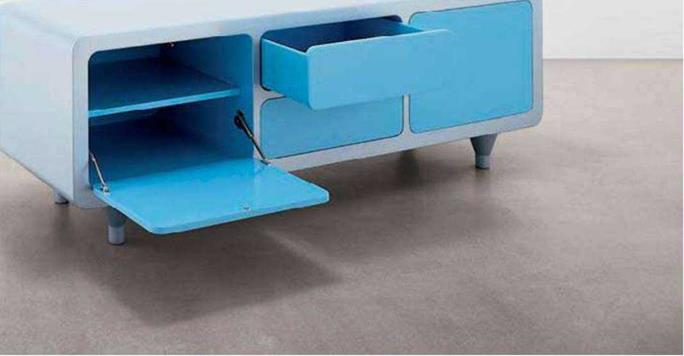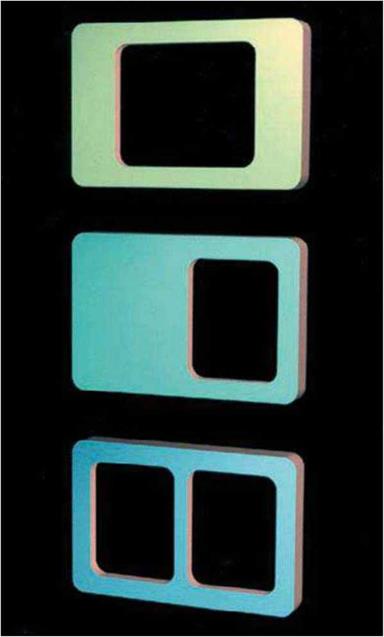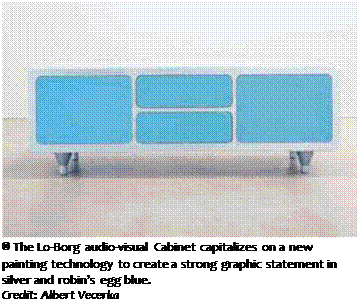 It turns out that the inspiration for the Lo-Borg and other pieces in this casegoods line came from a primal rather than futuristic fantasy life-form. According to Dine, “My very first inspirations were Fred Flinstone furniture, pieces that were carved out of one piece with no doors, just openings. Everything was reductive, not fabricated; it was like I took a gigantic rock and carved holes into it. I was unleashing my inner caveman.”
It turns out that the inspiration for the Lo-Borg and other pieces in this casegoods line came from a primal rather than futuristic fantasy life-form. According to Dine, “My very first inspirations were Fred Flinstone furniture, pieces that were carved out of one piece with no doors, just openings. Everything was reductive, not fabricated; it was like I took a gigantic rock and carved holes into it. I was unleashing my inner caveman.”
Not too long after his Flinstone efforts, Dine designed a series of plastic laminate frames for Wilson Art picture frames. “We used laminate colors to create these simple, soft radius shapes. That language, which was a kind of Zeitgeist of the times, sat well with me, and I decided I wanted to do a real project.” This led him to design the Cy-borg, which translated the muted geometric shapes that Dine found so interesting to the doors of a cabinet made of wood and aluminum. “It had the aesthetic that was permeating design at the time,” says Dine, “but I also felt that I wanted to keep developing it, and try and push the aesthetic beyond the initial hit that it had. I was taking a visual language that was out in the mainstream design culture and trying to make it my own. Of course,” he quips, “it’s not just me; it’s every other jerk in the world, too. It’s great when you’re designing something and see fifty other people doing it. Then you know it’s a great idea.”
In addition to his work as a commercial and residential interior designer, Dine is also the design director for Dune, a company that manufactures limited edition, “innovative interior products.” According to Dine, “Dune got this new technology paint, a special lacquer that enabled me to do these really graphic pieces, so we decided to do a line. I like these new versions with the paint instead of the wood and aluminum because they’re about the graphic quality of the shapes,” he notes.
To keep this graphic quality as clean as possible, the Lo-borg has no hardware on the doors and drawers, just touch latches. “I didn’t really want it to read anything other than the graphic interaction of the colors,” Dine points out. “I really like the tension of the color around the door and openings. It’s that sort of buzzing that happens with your eye; it’s that thickness of the radius trim and frame that’s equal throughout. That’s the visual language that permeates the series.” Fie continues, “It’s like the cabinet is the negative, and when you open it, the inside is the color of the front of the drawers.”
The legs, which carry the color of the frame down to the floor, are made of cast aluminum. “I wanted something to sort of transition from the mass of the piece downwards that felt solid,” Dine notes. “I wanted it to be organic, integrated into the piece, to
Q) The Hi-Borg, зо"(о.8 m) x 22n(o.6 m) X 6oM
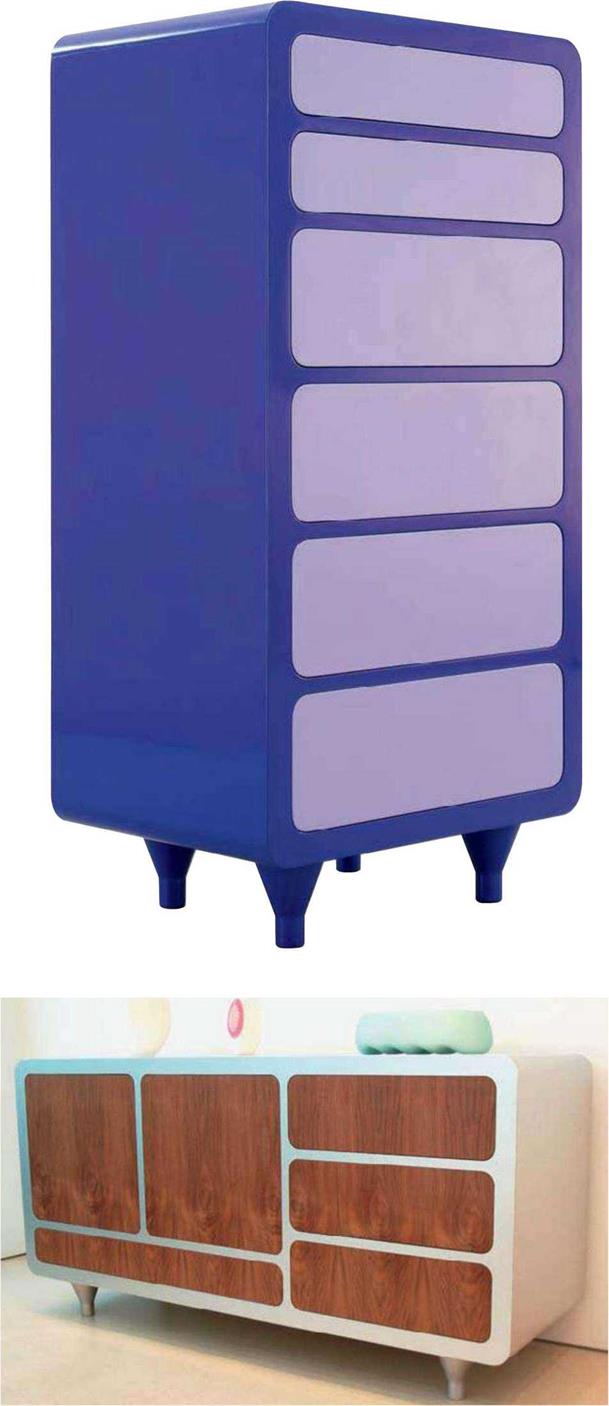 (1.5 m), was envisioned as a storage unit for the bedroom, but Dine feels the strength and simplicity of its graphic statement will make crossover to the contract, or commercial, furniture world inevitable. Credit: Albert Vecerka
(1.5 m), was envisioned as a storage unit for the bedroom, but Dine feels the strength and simplicity of its graphic statement will make crossover to the contract, or commercial, furniture world inevitable. Credit: Albert Vecerka
@ Designing these laminate art frames for Wilson Art started Nick Dine thinking about the other possibilities for radius curves, and led him to design the Lo-Borg. Credit: Albert Vecerka
<2> Bottom right: The original Су-Borg cabinet in aluminum and wood, 72n(i-8 m) x 23 j "(0.6 m) x зб"(о.9 m), was the genesis for the development of a complete line of case goods. Credit: Albert Vecerka
|
|
|
174 DESIGN SECRETS: FURNITURE |
|
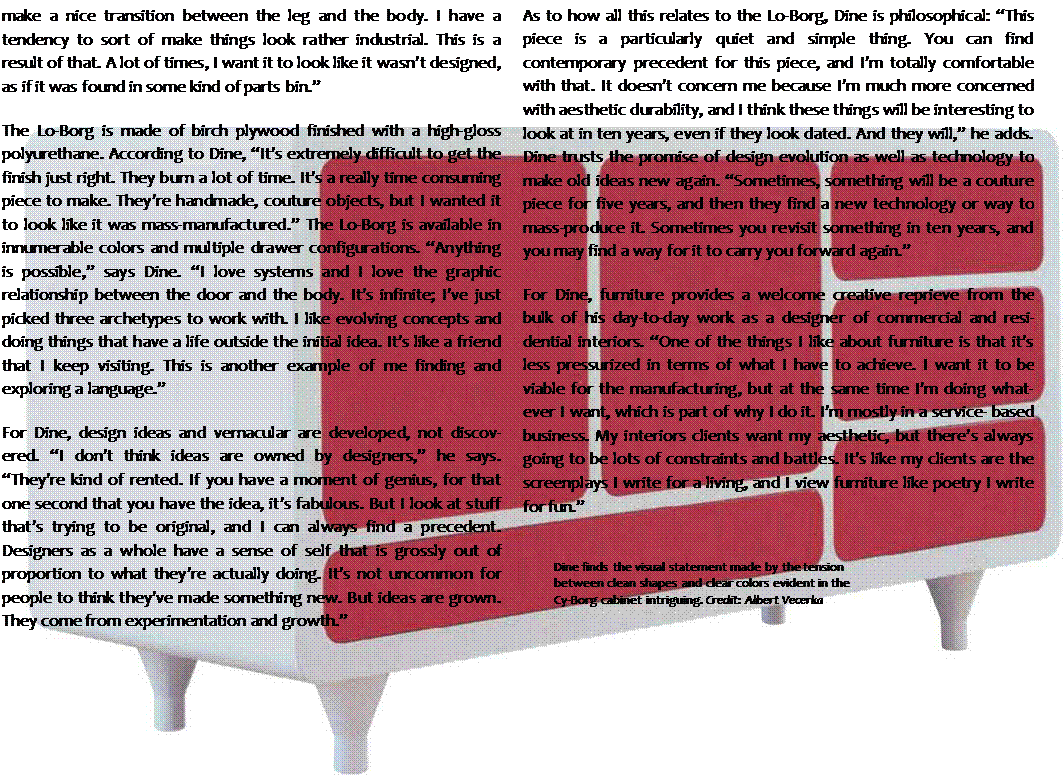 |




![]()
|
к ; ) |
|
|
і – ■’ і – |
|
|
м у/ • |
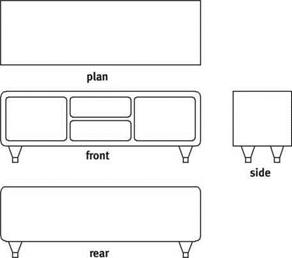 0 The Lo-Borg is available in a variety of drawer and door options, which make it viable as a stereo cabinet, dining room sideboard, or office credenza. Credit: Nick Dine
0 The Lo-Borg is available in a variety of drawer and door options, which make it viable as a stereo cabinet, dining room sideboard, or office credenza. Credit: Nick Dine
<2> The interior of the Lo-Borg, 74"(Ч-9 m) x 237-"
(0.6 m) x 26 7-"(0.7 m), is painted to match the drawers and doors in a labor-intensive process; touch latches keep the exterior surface clean and pure. Credit: Albert Vecerka
